Lloyd Warner was the youngest and smallest of Waner, the duo of brothers better hitter than ever seen in this sport. Lloyd had a career that lasted 18 years; his older brother, Paul played 20 seasons in the majors. For 13 of those years played alongside each other in the gardens of the Pittsburgh Pirates.
Together they dispatched 5,611 hits, 517 more than the three Alou brothers; 753 DiMaggios more than three and more than 1,394 five Delahantys. The Warner were the second set of brothers to be elected to the Hall of Fame, after George and Henry Wright pioneers.
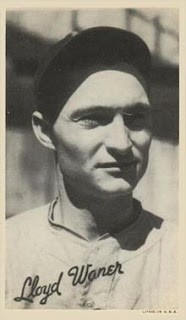 |
| Image Source : https://en.wikipedia.org |
They were born almost three years apart in Harrah, Oklahoma, the Warner guys were close together. They spent as much time as they could play baseball, learning to bat corncobs with broomsticks. His father, a exprofesional the bésibol, encouraged them. On one occasion, Paul said, however: "Our sister, Alma, was the best hitter of the family."
Paul was the first hitting coach Lloyd, and instructed him how to hit the ball down and connecting lines, rather than fly balls to power. That was good advice, because neither surpassed the 5 feet 9 inches, and weighed over 150 pounds. Although Paul produced more extra-base hits (including four times the number of runs) that his brother during their careers in the majors, hitting both had similar styles, and kept the bat resting on the shoulder until the pitcher began his release.
The success of Lloyd hitter was due in part to its exceptional view. It has the record for fewest strikeouts in a major league outfielder with more than 500 at-bats and only 8 in 1933! In 1941 Lloyd not struck for 77 consecutive games. He struck out only 20 times after his rookie year, and only 18 seasons failed 173 times. Their share of a punch every 44.9 at-bats is the second best in the history of baseball. Waner also preferred to hit the ball with the bat, instead of taking walked; he never received more than 40 bases in a season.
Lloyd Waner was one of the first fast men in baseball. After arrival, listeners began to pay more attention to the leg speed as before. Its speed also became a center fielder surprising. It topped the list four times removed, inclñuyendo 1931, when he captured high 515 hits, the number ten in history. Its 18 retired on a double set of 1935 still constitute a record.
When he signed a contract with the San Francisco League of the Pacific Coast, the youngest Waner was sitting on the bench during the 1925 season and saw his brother Paul connected to .401. Lloyd was upset because the team had backed the verbal comprimised a bonus of US $ 1,500 for the firm, and on the advice of a "scout" Pirates, requested his release in 1926. The Seals season pass, and suhermano the recommendation of Paul, Pirates hired young Waner. He hit .345 for the Columbia, South Carolina, and was named the MVP of the league.
While Lloyd was raging in the South Atlantic League, Paul made his presentation in the major leagues, batting .336 with lead in triples with 22 in 1926. The gardens of Buc seemed complete with brother Paul, Kiki Cuyler's fast and Clyde Barnhart slugger. However, the latter was presented with a grotesque excess weight. Not even all the steam of Paso Robles, California, could take it to a reasonable weight, and therefore the position of torn Lloyd won.
Lloyd's first year was one to remember. He set the major league record for a rookie with 223 hits; 198 of them were simple, which it equated with brand Wee Willie Keeler dating from the nineteenth century. Waner hit .335 and lead my salespeople league in runs scored with 133. The older brother, Paul, was the first in the league with .330 average, 131 RBIs, 18 triples and 237 hits. The two Waner combined 460 hits and 247 runs, and on September 4 homered in the same inning.
During an exceptionally productive period for both the summer in Brooklyn, a bulky guy of Italian descent he was heard shouting the accent on the city: "Every time I look, is that` venenito' third and 'grande' poison first". So they had baptized the Waners in newspapers: "Venenito" and "Poison".
In 1927, the Bucs outscored the Cardinals in the National League title. It is said that before the World Series, Lloyd and Paul were watching batting practice from Babe Ruth and Lou Gehrig. The youngest told the mayor: "Wow! They're a great guy, right?. " The Cardinals were swept overwhelmed by the powerful Yankees.
However, Lloyd said later, that story was not true, and denied that hubierna heat even seen the Yankees. He added: "I do not think Paul has never seen anything in the battlefield that would have scared". The facts confirm. The Pirates were not crushed by the Yankees in the World Series. And even though the Yankees won the Sertie in four games, two of them were decided by one run, and lost the final game in the ninth inning for a "wild pitch". In addition, the two hyphae Poisons exceeded Ruth and Gehrig .367 by .357. Lloyd batted .400; and six hits incluiyeron a double and a triple.
Both brothers participated in a national theater tour at the end of the World Series, and won US $ 2,000 per week. Paul supposedly played saxophone and fiddle simulated Lloyd ("Every cuendo were playing the same note as the orchestra" she recalls Paul.) And told jokes related to baseball. Fans worshiped and offered an additional tour of 10 weeks, however the brothers realized that their future was in the field, not on stage, and separated to begin training for next season.
Lloyd hit more than 220 hits in each of the following seasons, and led the league with 20 triples in 1929, achieving the third consecutive year that a player with the surname Waner was the leader of the National League triples. On June 9, 1929, the Waner siblings homered in the same amusement. Six days later, Lloyd had six hits in a comoptencia of 14 entries. "Venenito" missed the majority of the 1930 season for an infected appendix, but still batted .362. In 1931 he returned with an average of .314 and leading the league with 214 hits.
During the six years that followed, while the Pirates were between the second and fifth, lloyd average twice dropped below .285. However, from 1935 he batted .309 or more for four consecutive years, including a demonstration of 313 in 1938, the year in which the Pirates lost the pennant toward the end of the season by the renowned homer Gabby Harnett known as " The homer of Twilight. " Lloyd had this season a run of 22 consecutive game hitting (the best streak of his career was 23 games in 1935), and September 15, the Waner brothers homered in the same inning.
In 1939, the administration of Buc space were searching for some talents of budding gardens, particularly Maurice Van Robays and Johnny Rizzo. Waner played only 92 games in the outfield this year and 42 the next. He was traded to the Boston Braves, then to Cincinnati a month later, and batted .292 that season. When the Reds released him, he was with the Phillies, but when sold to Brooklyn after the 1942 season, he decided to hang the "spikes".
Were the years of the war. At 37, Lloyd had to find work at a military plant or risk being recruited. Branch Rickey requesting that he join the Dodgers in 1944, and he did, and hit .286 in 15 games. Later in the season, he rejoined the Pirates, with whom he finished his career in 1945.
He retired with 2,459 hits and .316 batting average. They then set about locating prospects for the Pirates over the next four years and for Baltimore in 1955. In 1967, 15 years after his brother Paul had been elected to the Hall of Fame, Lloyd Waner was included in the pantheon of the famous. He died in 1982.



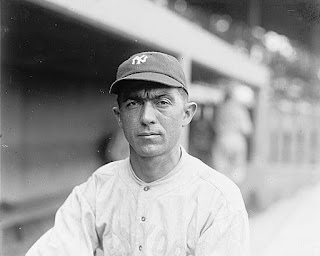

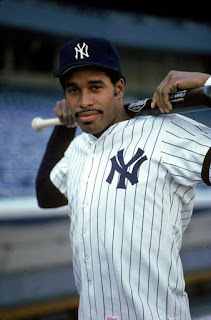

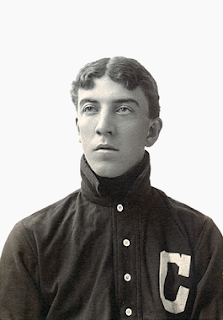
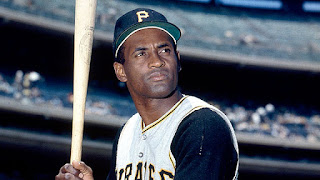
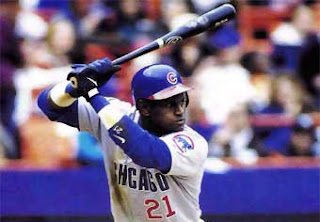














0 comments: